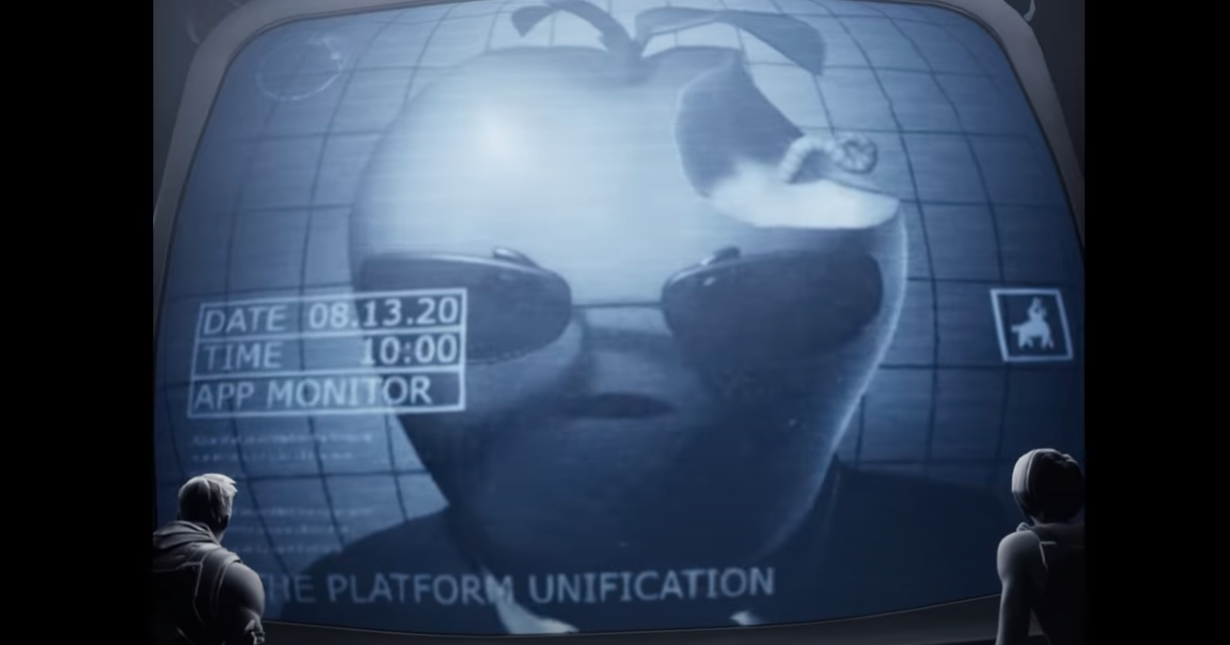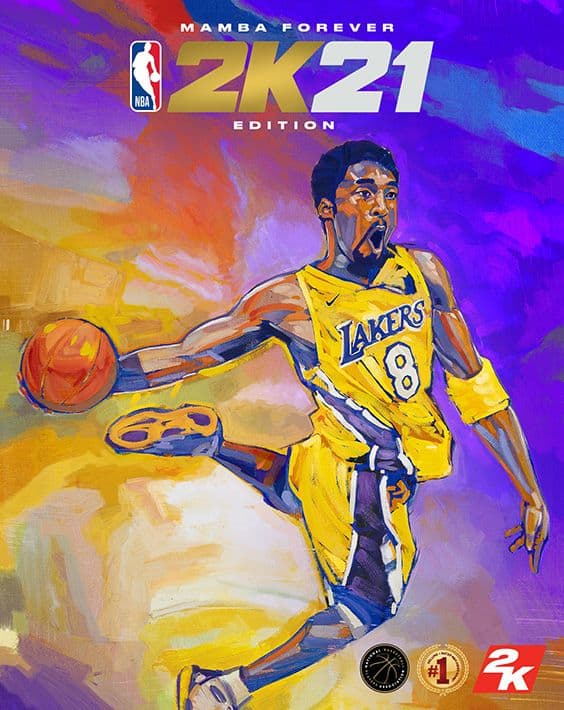
Platform Powerplay – Epic vs Apple. Industry First or Deja Vu?
Unless you have been living under a rock, the all-out war between Epic Games and Apple (and Google) IS the talk of the industry. And its flagship, you ask? Fortnite was said to have made $1.8 billion in 2019. Additionally boasting over 350 million players. 250 million players from the Apple App Store alone.
Epic Games’s “Nineteen Eighty Fortnite” campaign is, quite simply…. clever. Extremely controversial. Nevertheless very clever and bold. Boldly mocking Apple. And daringly appropriating Apple’s famous 1984 commercial during the Super Bowl. Yes, those many many moons ago. When Apple was the metaphorical underdog. And IBM was the Big Blue, the Behemoth, the old and stodgy. In short, Big Brother.

That being said, who doesn’t love a Biblical David versus Goliath story? By offering its players the option to buy in-app purchases on the Epic Store, Epic Games got its flagship Fornite disinvited from the Apple App Store party. And from Google. But is Apple unjustified in enforcing its developer terms and conditions?
A greater question is, is Epic Games really the innocent and bullied David of a developer?
If you ask EA, or Tencent, or Riot? Far from it. A developer-publisher does not build a $1.8 billion a year franchise (make that battle royale empire) by thinking or acting small. Nor by playing by the rules all the time. If Apple “Frees” Fortnite, then why not FreePUBG? And FreeBumble? If the New York Times gets an affiliate revenue cut for every single book sold from its New York Times bestsellers list, then is this that different?
At launch, Fortnite for Android was available exclusively on the Epic website.
When it comes to video game publishing, certain decisions are not ever taken lightly. Take for example, the platform(s) on which a game launches. What about exclusivity on the Apple App Store? Or Google Play? And what about Nintendo Switch for that matter? Or available on all platforms, all at the same time? For a period of time? Or for perpetuity? You get the idea.
At launch, Fortnite for Android was available exclusively on the Epic website. And purchases made in-app on Android? FREE from the standard 30% revenue share, uniformly extracted by Google and Apple from every other developer on their platform.
All This Hoopla over a $2 Price Differential? What!?
That’s right, you read that correctly. A measly $2 difference! Trivial? Not to the players. Pocket change? Not when you run the math. Epic Games created a mechanism for its players on Apple and Google to buy Fortnite’s V-Bucks directly on the Epic store. Instead of paying $9.99 inside the App Store or Google Play Store, Epic is being very very deliberate and smart. Rather its players are monetarily encouraged to pay $7.99 on the Epic Store.
So Epic gets its players to buy virtual currency from Epic directly for $2 less than the same bundle on the App Store? But why? Because this trains players to buy in-app purchases from Epic directly. For every 1000 V-buck bundle sold, Epic nets $7.99. Rather than having gamers buy as an in-app purchase directly inside the Apple or Google Fortnite app. In which case, Epic would have netted $9.99 less 30%, which nets out to just under $7 per bundle.
To anyone who thinks a $2 discount is not significant, think again. If this creates precisely the monetization and purchase behavior Epic wants, what gives? It doesn’t take years of consumer insights or market research, on video game pricing to predict the revenue mix by sales channel, fast-forward 4 weeks. Who stands to lose? Simply Apple. And Google.
Thirty percent of $1.8 billion is a lot of money. $540 million to be exact – paid to Apple and Google, last year.
FreeFortnite! FreeFortnite! Shots fired. Missiles launched. War declared. But CAN Epic win the war against Apple and Google? If Fortnite’s banning on the App Store and Google Play Store is any indication, most likely NO.
Was this fallout between a powerful video game developer and the publishing platform, an industry first?
But let us rewind the clock ten years. The year was 2010. Another high-flying video game developer and publisher. Different platform.
On the brink of filing for IPO, Zynga did the unthinkable. Zynga launched its own social network to compete against Facebook. The motivation? You guessed it. To protest Facebook’s anti-competitive practices. And to resist the Facebook policy of charging developers an ungodly sum of 30 %, to market and publish on the Facebook platform.
What’s at stake? In the case of Zynga in 2010? Zynga had a $597 million year in 2010, net of platform fees and revenue share. Assuming this was $597 million after giving Facebook a 30% cut, Zynga COULD have had a $853 million year! Clearly a $250 million sum is worth going to war over for Zynga in 2010.
Fallout from Facebook’s new policies banning auto-notifications and negotiating for better revenue share, Zynga launched its own website and game discovery platform.
And what about Facebook? Just testing its Facebook Credits, a universal currency across all of Facebook’s 500 thousand+ developers. The revenue share? You guessed it. Thirty percent.
When Facebook changed its developer policy and banned Facebook developers from auto-posting on user newsfeeds, who cared? For one, consumers cared. Who in their right mind, liked seeing their newsfeeds stuffed with meaningless “help a friend on FarmVille” requests?
From Zynga’s angle? This one obscure change hindered Zynga’s viral marketing. Think of it as limiting Zynga player’s user-generated content. Except the content was really developer-auto generated. Check out the following video, amongst 1000s, that cropped up. To address one need. Quite simply, to turn off auto newsfeed postings. All the joys of social media marketing 1.0.

Facebook was responding to user feedback, and defending its share of revenue from all Facebook developers.
Wait, so Facebook was addressing the experience of real users? Yes. Shouldn’t Facebook get compensated for helping Zynga acquire hundreds of millions of players? And in so doing, making Zynga very cash-rich and IPO darling in 2010? Seems reasonable.
Since Zynga derived a majority of its revenue on the Facebook platform in 2010, it benefited from the discoverability afforded by the platform.
$540 million is worth going to war over for Epic in 2020. As $250 million was worth going to war over for Zynga in 2010.
Fast forward to 2020. By the same token, it was estimated Epic got over 250 million downloads from the Apple App Store alone. To those of us coming from mobile marketing, we appreciate the media value of those users ranged in the hundreds of millions of dollars. The many millions of users Epic acquired on the App Store weren’t free. So should Epic be granted FreeFortnite? Or abide by Apple and Google’s developer policies? You know, like every other policy-compliant game and app developer?
FreeFortnite? Does that also mean FreeSupercell? Or FreeTinder? So SHOULD Epic Games pay a princely sum for the discoverability of its app, without which arguably Epic would not have had a $4 billion+ franchise on its hands.
In case you are wondering, Zynga and Facebook made up. Zynga agreed to an undisclosed set of terms of payment and revenue share from Facebook. Guess it’s only fair.
What does that mean for Epic and Apple and Google? Only time can tell. But platforms serve a distinct purpose. And derive a lot of power. And Yes. Apple explicitly stated. No links or side-stepping in-app purchases. Nobody forced Epic to publish on iOS. Since it chose to, Epic explicitly agreed to the iOS developer’s business terms. Building a link for players to make in-app purchases on the Epic Store? A legal breach.





